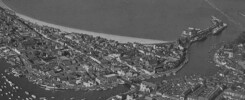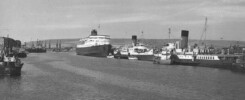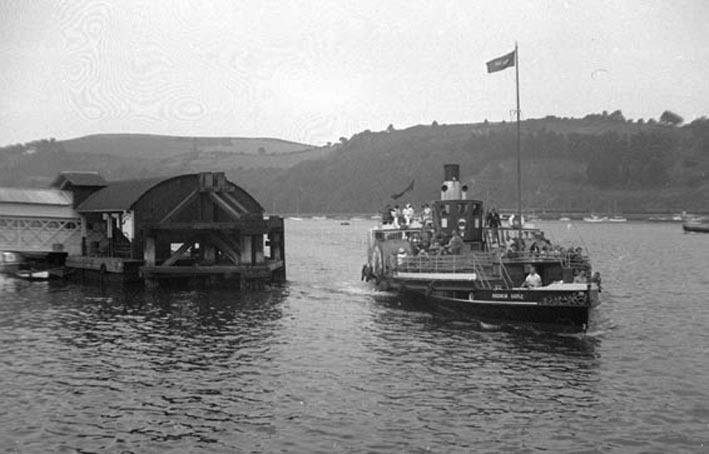
There was a lot going in paddle steamer circles in September 1965. Some of the news was good. Some was less good and, with the wind blowing the way that it was in those far off days half a century ago, inevitably the news involved yet more paddle steamers being taken out of service.
First to go in the early days of the month was our own Kingswear Castle (pictured above arriving at Dartmouth in 1964) which was withdrawn by her then owners, the River Dart Steamboat Company, laid up in Old Mill Creek and put up for sale.
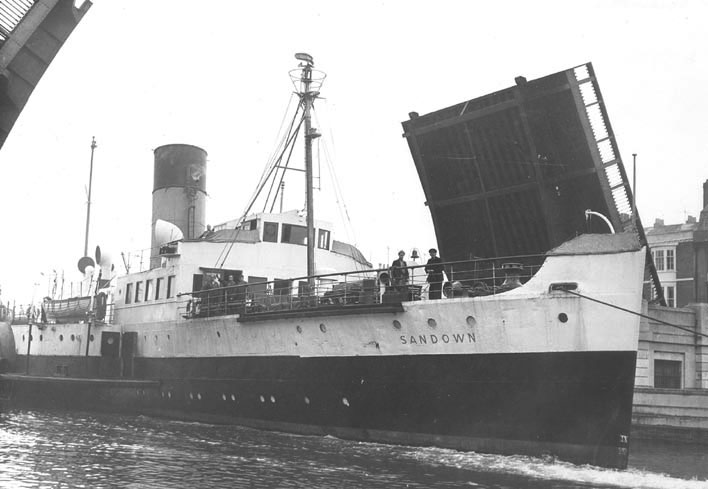
Next to be withdrawn was British Railways’s Sandown (pictured above passing through the Town Bridge at Weymouth in autumn 1962) which made her last crossing between Portsmouth and Ryde on Sunday 19th September before sailing on to lay-up at Newhaven the following day and also being put up for sale.
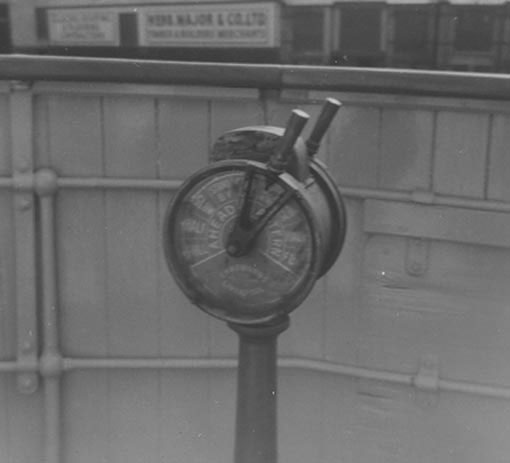
Then came the Princess Elizabeth which made her last trip under her own steam on Thursday 23rd September from the Weymouth Pleasure Pier to her lay-up berth in the Backwater with her telegraph ringing “Finished with Engines” for the last time at about 4.45pm.
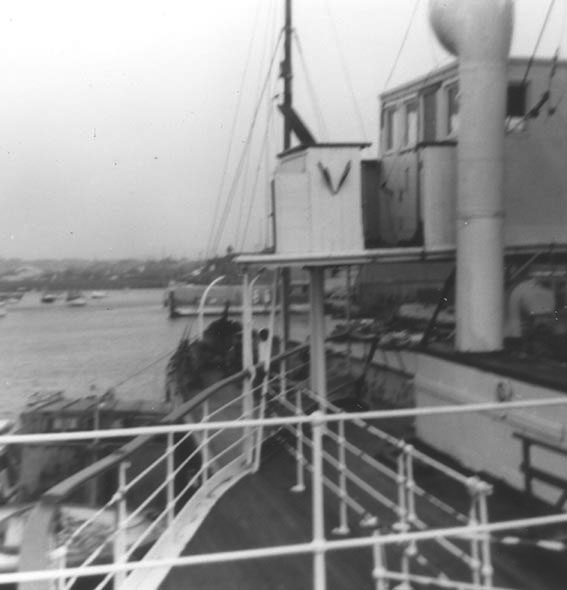
She was also put up for sale and did change hands but languished in this berth for another couple of years gradually looking more and more unloved and fading as money for proposed new ventures ran out.
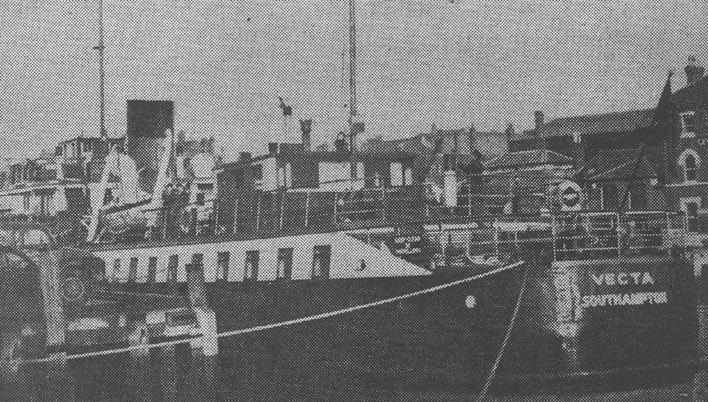
However all was not doom and gloom. Red Funnel’s Vecta (pictured above alongside Trinity Jetty at Weymouth) made her last sailing for Red Funnel on Saturday 18th September 1965 but was already ear-marked to be sold to P & A Campbell to augment their Bristol Channel paddle steamer fleet. She left Southampton on Monday 20th September for Cardiff and ran on the Cardiff Weston ferry, still in Red Funnel colours, for over a week before returning to Weymouth for a major refit by Cosens that winter which included plating up her car deck and re-painting her in the Campbell livery.
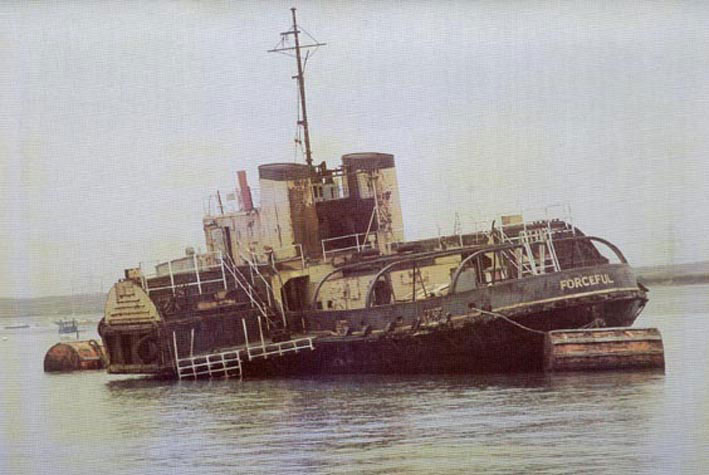
Another focus of September 1965 was the relatively new fleet of Director Class Diesel electric Admiralty paddle tugs like the Forceful pictured on the buoys at Queenborough in the 1990s en route to the scrapyard at the end of her career after further use as a target ship. These paddlers had been built as recently as 1957/58 and were in the frame that September as the Wessex Branch of the PSPS was in the process of organising a trip to look round one of them, the Grinder, at Portsmouth.
Fortune smiled on this event, which took place on the morning of Saturday 2nd October 1965, with the Grinder giving the PSPS party a trip round the harbour. A report of this exciting and unusual excursion appeared in issue number 23 of Paddle Wheels in November 1965 written by someone called John Megoran. That same edition of the magazine also contained reports by two other fourteen year olds from Weymouth with Richard Clammer writing about the Embassy and Richard Green the Princess Elizabeth. A seventeen year old from Southampton, Peter Lamb, completed the youthful hat trick with a news item in the same edition on the arrival of the Medway Queen at Cowes on Tuesday 28th September 1965 which highlighted another really positive paddle steamer happening that month.
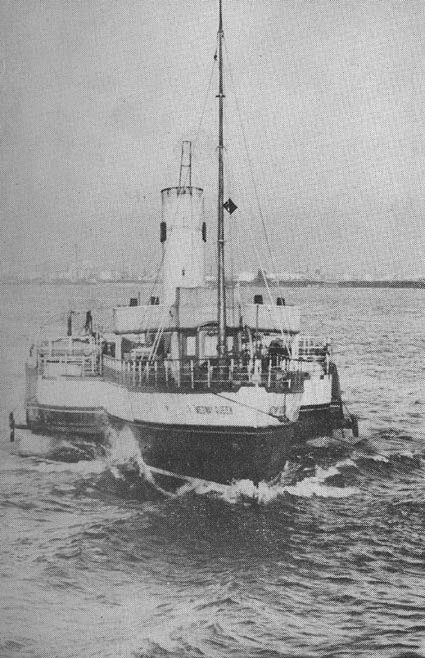
After lying idle since 1963, the Medway Queen set off under tow down the Thames on the morning of Monday 27th September 1965 en route for Cowes for a new life as a static bar and restaurant at Binfield on the Isle of Wight in ownership of the Ridett brothers. Her arrival provoked much press and television interest with PSPS Wessex Branch secretary Eileen Pritchard giving many interviews.
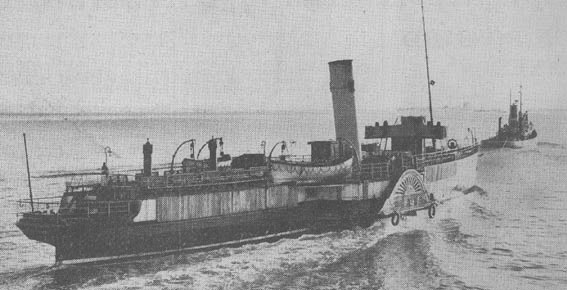
Looking at her in this shot passing the Essex Coast outward bound with her tug Dhulia it is interesting to see how the surveyor had insisted in having all her windows boarded over with wood for the passage round the North Foreland and along the South Coast.

Then, as if all that was this was not enough, it was September 1965 when news started to filter through that Weymouth based shipbroker Tony McGinnity had persuaded London businessman Don Rose to buy the Clyde paddle steamer Jeanie Deans and put her back into service on the Thames. Here she is alongside at Greenock in her new livery in early November 1965 about to set off south.
So there was a lot going on in paddle steamer circles in September 1965 with the news of yet more paddle steamer withdrawals balanced by the optimism of new ventures for others elsewhere.
Sadly not all of these turned out to be a success.
The Sandown had no future and was towed away from Newhaven to be scrapped in Antwerp in February 1966.
The Vecta, renamed Westward Ho, continued to sail for P & A Campbell until September 1971 after which she found a static role in Manchester until 1985. She was then moved to London, Chatham and finally Torpoint in Devon before being cut up around 1997.
All seven of the Director Class Admiralty paddle tugs, which had seemed such a bright hope for the future of the paddle wheel in 1965, had been withdrawn within twenty years of their build and replaced by tugs with more modern Voith Schneider or Shotel type propulsion units. They are now all long gone.
After two difficult and very short seasons on the Thames, the Jeanie Deans, renamed Queen of the South, was towed away to be scrapped in December 1967 also in Antwerp.
But for all that there were still three success stories from those September 1965 events with three of these paddle steamers finding new roles which have led to them still being with us today.
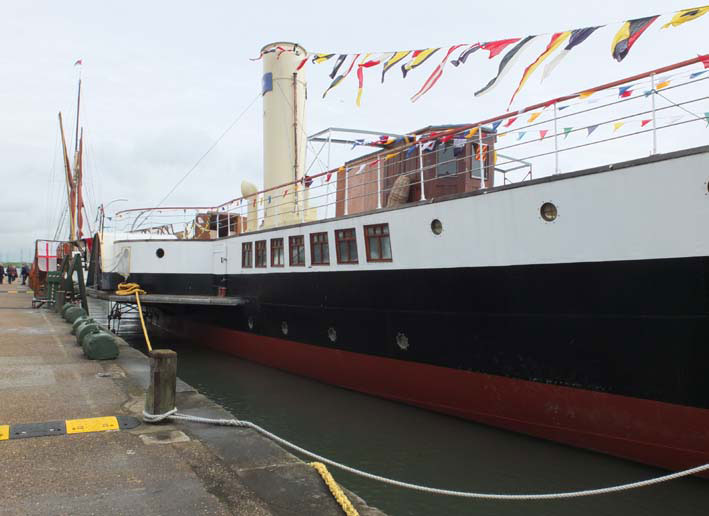
After a troubled career on the Isle of Wight and later on the Medway, Medway Queen now has a new hull and awaits further progress back in her home waters at Gillingham in Kent.
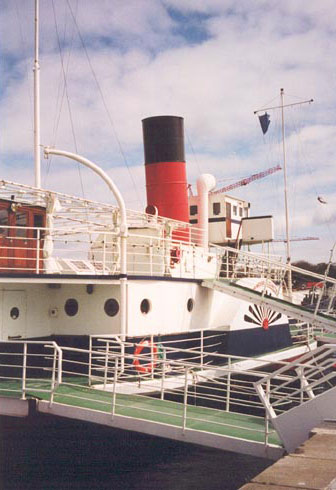
After use as a static restaurant and bar, first on the Thames and then in Paris, Princess Elizabeth is now in use at Dunkirk as a conference venue albeit without her machinery.
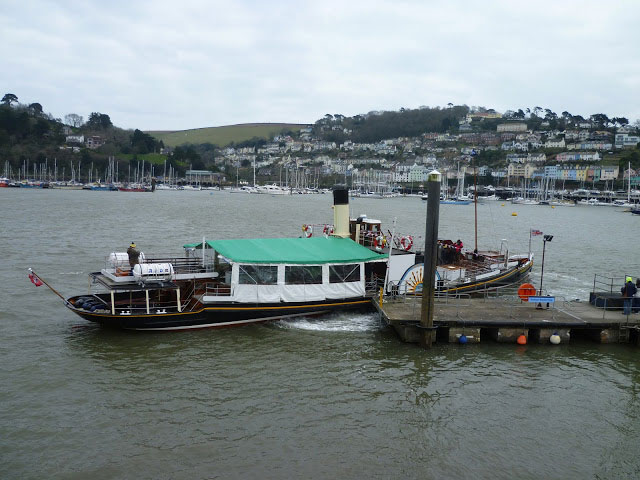
And our own Kingswear Castle is now paddling her way through her thirty second season of operation since being returned to service in that shakedown summer of 1984 on the Medway and is now back home sailing on the River Dart.
Of course nothing succeeds in this world without someone somewhere doing something to make it happen somehow and two names from September 1965, and indeed all the 1960s, stand out. Eileen Pritchard and her protégé, the young Tony McGinnity, were in the forefront of attempts to keep paddle steamers going and find new uses for them in all those early years of paddle steamer preservation even going so far as to putting their own money into one, the Consul.
Beyond that their lobbying was extensive. Their leadership inspired others to do the same. And in our own particular corner of success, they set the ball rolling for the purchase of Kingswear Castle without which I don’t believe that she would be here today. We all, and indeed I personally, have very much for which to thank them.
For more details of the events unfolding around the Jeanie Deans in November 1965 see the November 2005 Pictures of the Month here.
Kingswear Castle returned to service in 2023 after the first part of a major rebuild which is designed to set her up for the next 25 years running on the River Dart. The Paddle Steamer Kingswear Castle Trust is now fund raising for the second phase of the rebuild. You can read more about the rebuilds and how you can help if you can here.
John Megoran

